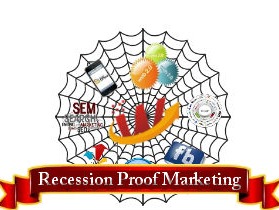
Understanding LinkedIn's New Measurement Paradigm for B2B Marketing
In the fast-paced world of digital marketing, staying ahead of the curve isn't just preferred; it’s essential. LinkedIn is redefining the rules of B2B marketing measurement, emphasizing the increasing need for marketers to demonstrate the impact of their efforts in more profound and meaningful ways. As user behaviors evolve and new technologies emerge, B2B marketers face the challenge of shifting from vanity metrics to actionable insights that highlight their contributions to the bottom line.
A Shift from Vanity to Value
The transition from merely justifying marketing expenditures to demonstrating genuine impact is pivotal for B2B brands. According to LinkedIn's recent guide, leading brands are restructuring their frameworks to distinguish between different KPI types, moving beyond basic clicks and impressions. This shift, echoed by industry experts like Vivek Khandelwal from ServiceNow, underscores the urgency of integrating long-term revenue attribution into marketing strategies.
Capturing and Leveraging Customer Behavior
Central to LinkedIn's new rules is the ability to effectively capture customer behaviors at every stage of the marketing funnel. Marketers are encouraged to use tools such as the LinkedIn Insight Tag to gather meaningful data across customer interactions. The more comprehensive the data collected, the better equipped teams will be to analyze behavior patterns, optimize campaigns in real time, and ultimately improve conversion rates.
Aligning Goals Across Teams
One of the most significant roadblocks in B2B marketing is the misalignment between marketing and sales teams. According to data from LinkedIn, organizations that foster collaboration experience an impressive 208% increase in revenue growth. This is a clear sign that aligning messaging and team goals can directly enhance overall marketing performance and customer retention.
The Future of Measurement is Here
Looking ahead, we see a promising horizon filled with opportunities to incorporate AI into B2B marketing strategies. Recent statistics reveal that nearly 92% of B2B marketers anticipate that AI will play a crucial role in transforming their measurement capabilities over the next five years. With a promise to enhance accuracy and streamline data interpretation, organizations need to adapt to these new tools to remain competitive.
Steps to Building an Effective Measurement Strategy
- Define Success: Engage stakeholders to establish what success looks like, identifying crucial business outcomes alongside key performance indicators.
- Capture Data: Utilize technology to gather relevant signals across various touchpoints, ensuring that all customer interactions are accounted for.
- Activate Insights: Apply collected data to improve targeting and outreach, ensuring every marketing action yields valuable results.
- Evaluate & Maximize: Assess performance metrics to validate strategies, revealing insights that can guide future marketing decisions and maximize returns.
Embracing the Change
The B2B marketing landscape is ever-evolving, and adaptation is crucial. Organizations that embrace these new measurement frameworks and the opportunities provided by technologies like AI will not only keep pace but potentially lead the charge in marketing innovation. LinkedIn’s commitment to refining marketing measurement provides a robust foundation for marketers eager to explore new avenues to connect their initiatives with tangible business outcomes.
As B2B marketers reflect on these shifts, they must gear up for a future where their impact is not just reported but celebrated. Are you ready to embrace the future of B2B marketing measurement?
 Add Row
Add Row  Add
Add 




Write A Comment